
-
"People mistakenly call it a color space," Griffis said. "It's actually a two-dimensional plane and what you really need to know if you're a creative is this is your palette of colors but what the horseshoe chart doesn't tell you is how bright each color can get. White will always be the brightest because it's the sum of all three primary colors."
"So we've got this interesting problem that we've lived with for the better part of 60 years where the colors in film go out farther but you can't get as bright and in television there are less colors but you can get brighter," Griffis told Gizmodo. "And the practical consequence of that for the content creator is that the Red Bus of London that looked so great in the movie looks like Campbell's Tomato Soup on the Blu-ray unless someone does something."
http://gizmodo.com/how-dolby-vision-works-and-how-it-could-revolutionize-1594894563
So Dolby (who makes the most amazing video monitors) finally did something. And When it hits TVs and Computer monitors... all this REC 709 bullshit can finally fuck off.
I am so damn happy... you don't even know.
-
Good riddance.
-
AFAIK, REC 701 was introduced mostly to meet the very limited color gamut that most LCDs are capable of displaying. REC 601, the legacy from the CRT era, was using a somewhat larget color gamut. And CRTs delivered a better static contrast then LCDs, so I wonder why they bash CRTs in the article, while they should bash LCDs.
It sure would be good if a wider gamut was used with displays (like OLEDs) that can actually display a wider gamut.
But better don't hold your breath: It took years until LCDs obsoleted CRTs enough to have media producers react on the new situation. And it will take years before the restrictions of the "LCD era" will be removed for the sake of more advanced displays.
Also, I would not over estimate the public perception of such an improvement: So many people cannot tell 1080p from 720p, so many people like unrealistic low FPS better than more realistic high FPS material, so many people hardly notice the lack of static contrast in contemporary LCDs - I would be surprised if they could turn REC 2020 into a marketing argument that works.
-
Marketing won't cut it, that's not going to win the battle. Bottom line, key players need to choose to adhere to REC2020, or it won't happen. TV Broadcast and web (Netflix, HBO, Hulu, YouTube) both need to get onboard, or the sh*t show will continue where broadcast and web have different standards.
-
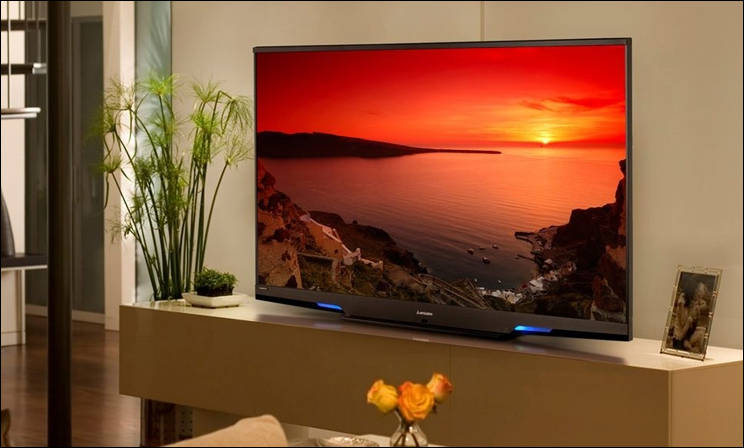
Mitsubishi Electric showed panel prototype with 98% coverage of Rec. 2020 color space

 zebra203.jpg744 x 448 - 46K
zebra203.jpg744 x 448 - 46K -
Good PDF about possible issues
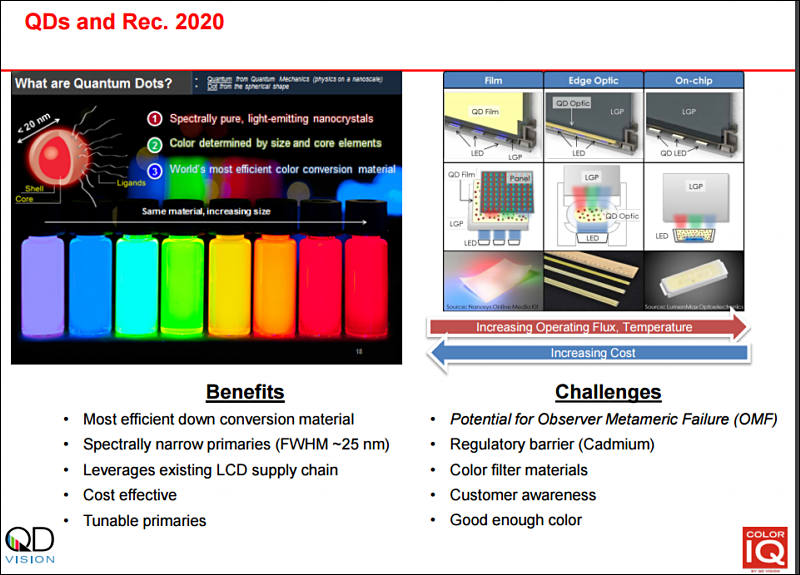
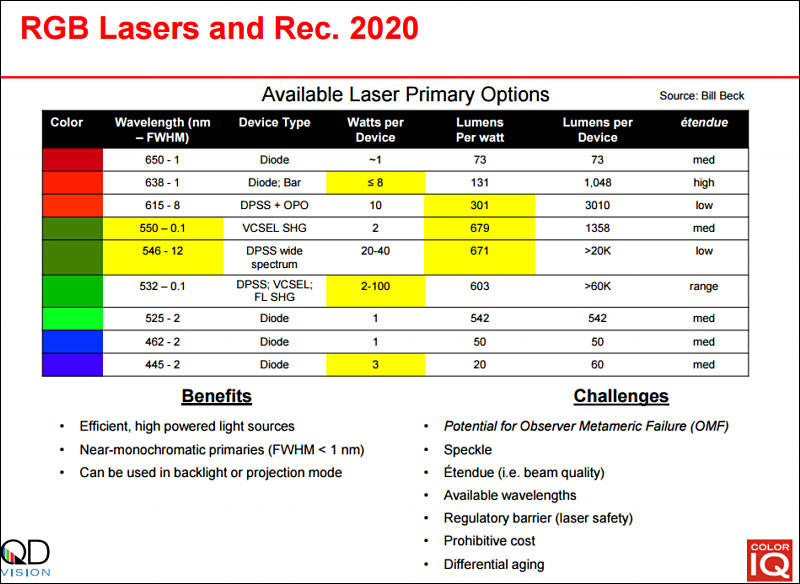
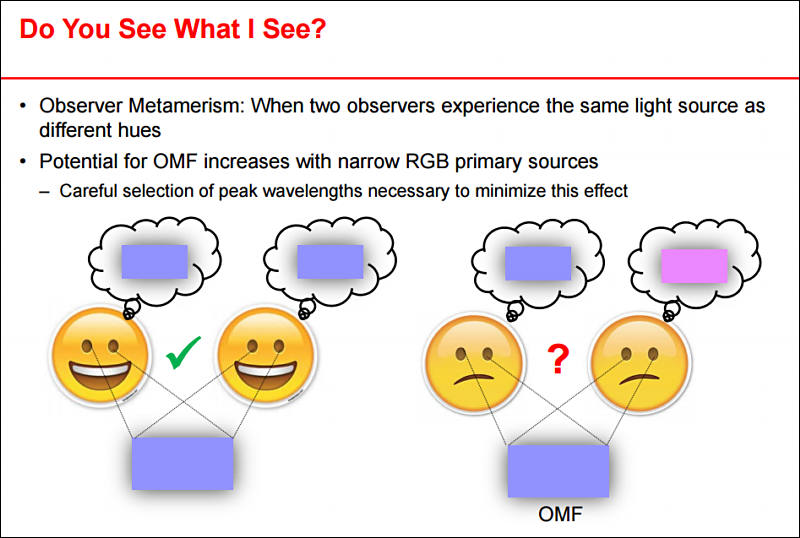
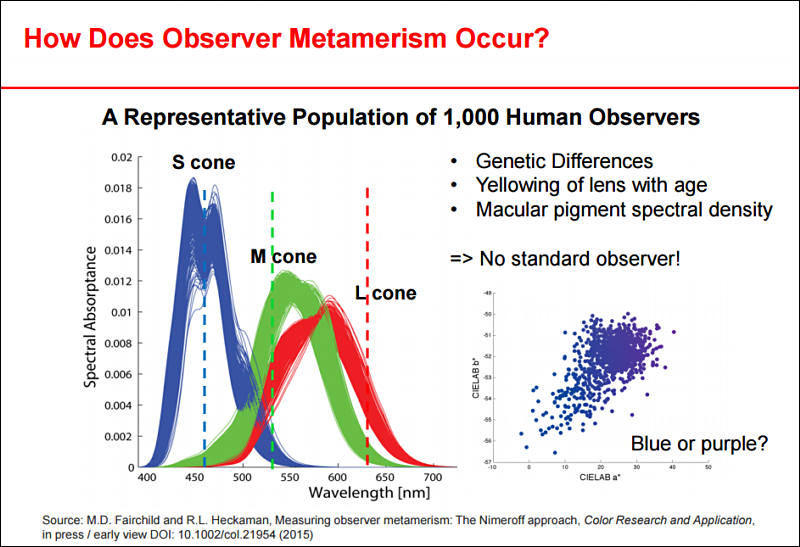
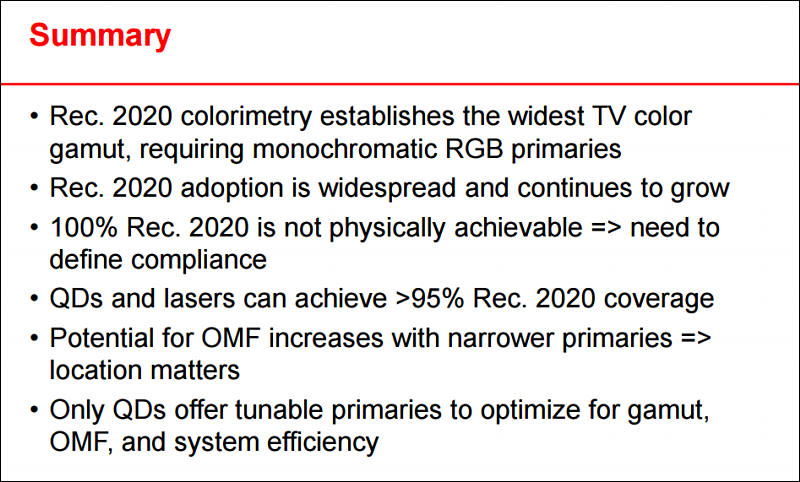
http://www.sid.org/Portals/sid/Files/pdf/BASID/160324%20BASID%20John%20Ho.pdf

 img2673.jpg800 x 575 - 98K
img2673.jpg800 x 575 - 98K
 img2674.jpg800 x 584 - 96K
img2674.jpg800 x 584 - 96K
 img2675.jpg800 x 538 - 73K
img2675.jpg800 x 538 - 73K
 img2676.jpg800 x 547 - 88K
img2676.jpg800 x 547 - 88K
 img2677.jpg800 x 482 - 91K
img2677.jpg800 x 482 - 91K -
I wonder why the slide on observer metamerism does not mention human tetrachromacy as another contributing factor.
-
Maybe since it's extremely rare?
-
Some paper on issue
Wide color gamut media are emerging, and observer metamerism is more and more concerned. We carried out the experiment on two different media involving color matching using real images to investigate how serious observer metamerism would be under a practical viewing condition. One media was a LCD monitor, and the other media was a laser projector. 30 observers participated in the experiment, and the data from 28 observers were analyzed. Under the viewing condition where images were widely separated (often the case in reality), the lightness discrimination was significantly decreased. It led to our decision to ignore the variability in the lightness direction when computing perceived color differences. The obtained interobserver variability was larger than intra-observer variability for all the three images. The inter-observer variability was 3.2 to 4.4 in MCDM (∆E00, a∗ b∗), which indicates observer metamerism would be significantly apparent when a laser projector is viewed together with conventional media. Image impression could be perceived in a opposite way (a person may see an image as ’warm’ whereas another person may see it as ’cool’). It was found that effective visual angle (or field size) is dependent on image contents. The more complex an image is, the smaller the effective visual angle is. Solutions should be provided for observer metamerism in wide color gamut media, such as color management personalization.
http://www.cis.rit.edu/~yxa8513/Publications/Paper_CIC2014.pdf
-
More on topic
In designing color primaries for accurate color reproduction, spectral characteristics do carry significant importance. A move towards monochromatic color designs such as are found in laser displays adds significant chromaticity gamut area for users, but at the expense of observer metamerism and variability. Investigation of real displays designed around three current color standards for motion picture work reveals that the latest specification, ITU-R Rec. 2020, offers strong potential for viewer disparity when compared with older broad-spectrum standards like ITU-R Rec. 709 and SMPTE 431. Expanding to more than three laser primaries can help, but only if those wavelengths are themselves optimized to the objective of improved observer consistency. Attempting, instead, to simply generate the largest color gamut possible from multiple laser wavelengths may actually exacerbate metamerism failure. Finally, it is possible to craft customized primary spectra with the intent of minimizing observer metamerism. A prototype seven-channel projection system at RIT has been constructed with modeled results significantly improved over any legacy three-color display
-
Here in Australia rec709 will be in use for the foreseeable future as there are no plans to change the broadcast specification. It will be a very long time before we see a major change in the broadcast industry. Web delivery is where the future lies and hopefully we will see rec2020 implemented fairly quickly.
Howdy, Stranger!
It looks like you're new here. If you want to get involved, click one of these buttons!
Categories
- Topics List23,990
- Blog5,725
- General and News1,353
- Hacks and Patches1,153
- ↳ Top Settings33
- ↳ Beginners256
- ↳ Archives402
- ↳ Hacks News and Development56
- Cameras2,366
- ↳ Panasonic995
- ↳ Canon118
- ↳ Sony156
- ↳ Nikon96
- ↳ Pentax and Samsung70
- ↳ Olympus and Fujifilm100
- ↳ Compacts and Camcorders300
- ↳ Smartphones for video97
- ↳ Pro Video Cameras191
- ↳ BlackMagic and other raw cameras116
- Skill1,960
- ↳ Business and distribution66
- ↳ Preparation, scripts and legal38
- ↳ Art149
- ↳ Import, Convert, Exporting291
- ↳ Editors191
- ↳ Effects and stunts115
- ↳ Color grading197
- ↳ Sound and Music280
- ↳ Lighting96
- ↳ Software and storage tips266
- Gear5,420
- ↳ Filters, Adapters, Matte boxes344
- ↳ Lenses1,582
- ↳ Follow focus and gears93
- ↳ Sound499
- ↳ Lighting gear314
- ↳ Camera movement230
- ↳ Gimbals and copters302
- ↳ Rigs and related stuff273
- ↳ Power solutions83
- ↳ Monitors and viewfinders340
- ↳ Tripods and fluid heads139
- ↳ Storage286
- ↳ Computers and studio gear560
- ↳ VR and 3D248
- Showcase1,859
- Marketplace2,834
- Offtopic1,320









